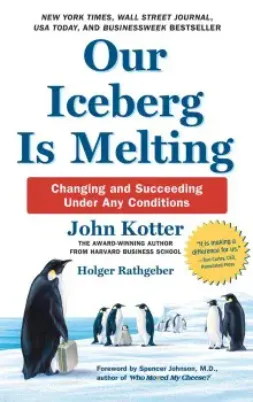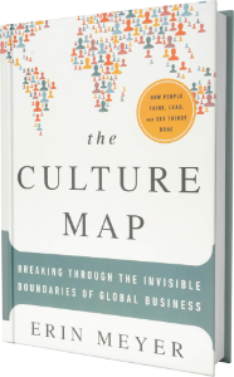The Role of HR Professionals in Change Management & Organisational Transformation
HR professionals play a crucial role in guiding organisations through change management and transformation. Recently, we were fortunate to have Emma Richardson join us to facilitate an insightful roundtable discussion on this topic. With over 20 years of experience in managing change initiatives across professional services, Emma’s wealth of knowledge and engaging anecdotes provided a thorough exploration of how HR teams can support organisations during periods of transformation.
Champions For Change
Emma began by emphasising the importance of having structured "champions for change" within the organisation. Broadly speaking, change initiatives tend to be met with three types of responses: 20% champions, 60% indifferent participants and 20% naysayers. A common mistake many HR teams make is investing too much energy in trying to convert the 20% who are resistant to the change. However, unless these naysayers include key decision-makers, it’s often more productive to focus on winning over the 60%. Once you gain their support, the remainder will have the choice to proceed, or, to ultimately leave the organisation. Change is an uncomfortable process and it’s important to recognise that people will always have a choice to either embrace it or move on.

Our Iceberg Is melting
To help HR teams and leadership navigate the complexities of change, Emma recommended John Kotter’s "Our Iceberg Is Melting" as a valuable resource. The book provides a framework for understanding different responses to change and how to manage them effectively. Whether it's Kotter’s work or another resource, creating a common language around change within the team is crucial. This ensures everyone is on the same page when it comes to planning, executing and managing change.

Managing Change
HR teams must also anticipate, and share, the implications of change, particularly when it comes to future projects, staffing and working with the end goal in mind when managing change. For example, planning for headcount reductions and adjusting project timelines in anticipation of these changes can help avoid disruptions during the transition. The aim is to avoid "death by a thousand cuts," a scenario where multiple small, ineffective changes lead to burnout and resistance. Instead, a clear and well-coordinated change process should be implemented to ensure that the change happens once and sticks.
Clear, Consistent Communication
This discussion naturally led to the topic of communication and transparency. Clear, consistent communication before, during and after the change is vital to ensuring employees understand the transformation process and know where to find additional information. Emma highlighted the importance of maintaining consistent messaging throughout, including cascading communications through appropriate channels to reach all levels of the organisation.
In addition to clear verbal communication, visual tools are also essential in managing change. One effective strategy is to create a visual identity for the change, such as a project name, logo or branding, to help employees easily recognise actions associated with the change. This can make the process more tangible and accessible, while also signalling where employees can turn for updates and support. With this, Emma stressed the importance of considering generational differences in communication preferences. With up to five generations now in the workforce, HR professionals need to tailor their communication strategies. For example, younger employees, such as Gen Z, may prefer updates on social media platforms like TikTok or through visual branding, while older generations might lean toward more traditional methods like newsletters or email updates. Recognising these preferences and utilising multiple channels of communication can help ensure that the messages of change are effectively disseminated.

Emotional & Psychological Considerations
Understanding the psychology of change is another vital component of successful transformation. People naturally view change through a survival lens, but the human race is inherently adaptable. Emma encouraged HR professionals to consider the emotional and psychological responses individuals may have to change, as these can often be influenced by factors outside of work. Personal challenges or distractions may affect how employees react to change and HR professionals should approach these situations with empathy and understanding. By anticipating these reactions, HR teams can better plan their communications, timing and strategies to minimise resistance and encourage smoother transitions. This level of empathy is key to creating a supportive environment during periods of organisational change.
The Culture Map
For a number of attendees, global operations and managing change across different cultures presented an additional set of challenges. Emma recommended Erin Meyer’s "The Culture Map" as a useful resource for understanding the nuances of working with a diverse workforce – which many were already familiar with. Meyer’s framework highlights eight cultural dimensions that influence how people from different countries approach conversations, feedback and decision-making processes. For instance, when giving feedback, the "praise sandwich" may be effective for British employees, while Germans tend to prefer a more direct approach. Avoiding colloquialisms and understanding cultural differences in communication styles is essential to ensure the change message is clear and resonates with all employees. In this context, HR professionals must be mindful of how different cultural perspectives can shape reactions to change and should tailor strategies accordingly.

Conculsion
Managing organisational change is a complex and multifaceted process and HR professionals play a central role in ensuring its success. By focusing on building a strong network of change champions, communicating clearly and consistently, considering the psychological and emotional aspects of change and adapting to the cultural needs of a diverse workforce, HR teams can help organisations navigate transformation smoothly. As Emma’s insights demonstrated, a thoughtful, empathetic and strategic approach to change management can lead to lasting positive outcomes for both the organisation and its employees.
For EA/PA, HR and Business Support recruitment, contact philippa@candcsearch.co.uk
For keynotes, training, workshops and group coaching, contact lucy@candcsearch.co.uk
For C&C Academy, contact anna.r@candcacademy.com
#HR #HRRecruiters #HRJobs #Culture #ManagingChange









